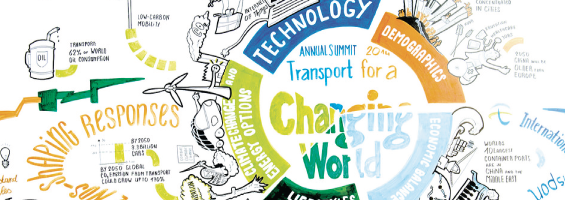Healthcare Industry Transformations
Health Insurer Mergers Signal Fundamental Industry Shifts
When Aetna announced its deal to acquire Humana and Anthem followed with its plan to buy Cigna, the moves ushered in a new era of mergers in the US health insurance industry. The combination will about $90 billion in value, making previous deals seen as comparatively small but it does raise the stakes for higher performance expectations.
This and other planned mergers among insurers and service providers are signalling a major shift in the US health care marketplace.
The federal government, once primarily a regulator of private health insurance companies, is quickly becoming one of their more important customers, through public financing of health plans provided by private insurers, such as Medicare Advantage plans, Medicaid managed care plans and health plans provided through state and federal insurance exchanges.
This change in the healthcare landscape means the government will transition from regulator to purchaser of health services from fewer insurance companies.
Underway ever since the creation of Medicare managed-care plans in the 1970s, the transition accelerated with the adoption five years ago of the Affordable Care Act, also known as Obamacare, according to the 2015 U.S. News & World Report Health Care Index. The Affordable Care Act has added an estimated 16.4 million previously uninsured people to the ranks of those with coverage, according to federal data.
Many of those new customers are buying government-subsidized private plans or public plans managed by private insurance companies. That makes public coverage a vast and potentially rewarding market for insurers. This trend means more and more people will get their healthcare through subsidized programs, which will grow as the baby boomers and Medicare program grows.
This and other planned mergers among insurers and service providers are signalling a major shift in the US health care marketplace.
The federal government, once primarily a regulator of private health insurance companies, is quickly becoming one of their more important customers, through public financing of health plans provided by private insurers, such as Medicare Advantage plans, Medicaid managed care plans and health plans provided through state and federal insurance exchanges.
This change in the healthcare landscape means the government will transition from regulator to purchaser of health services from fewer insurance companies.
Underway ever since the creation of Medicare managed-care plans in the 1970s, the transition accelerated with the adoption five years ago of the Affordable Care Act, also known as Obamacare, according to the 2015 U.S. News & World Report Health Care Index. The Affordable Care Act has added an estimated 16.4 million previously uninsured people to the ranks of those with coverage, according to federal data.
Many of those new customers are buying government-subsidized private plans or public plans managed by private insurance companies. That makes public coverage a vast and potentially rewarding market for insurers. This trend means more and more people will get their healthcare through subsidized programs, which will grow as the baby boomers and Medicare program grows.
URBANIZATION - MOVEMENT OF THE MASSES
The federal government, once primarily a regulator of private health insurance companies, is rapidly becoming one of their more important customers, through public financing of health plans provided by private insurers, such as Medicare Advantage plans, Medicaid managed care plans and health plans provided through state and federal insurance exchanges.
THE ENVIRONMENT, CLIMATE & RESOURCES
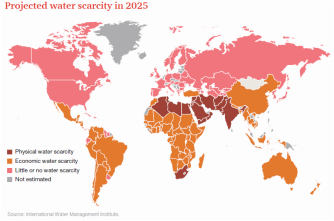
Scarcity of resources and the impact of climate change are of growing economic concerns. Demand for energy is forecast to increase by as much as 50% by 2030, and water withdrawals by 40%.
Impacts may include increases in extreme weather and rising sea levels, which could make traditional methods of farming, hunting, and fishing difficult or impossible in some places.
The need for sustainable solutions may well be at odds with the need for resources to fuel growth and feed populations. Time-honored traditions will be challenged by changes to the physical environment.
One reason that electric vehicles is not selling as fast as they should is the gap in charging stations. More than 96,000 plug-in hybrid and electric cars were sold in the US in 2013 but only about 22,000 public charging stations exist. Companies such as electric vehicle charging service and network provider CarCharging Group and electric vehicle services provider Recargo, whose PlugShare app shows charging spots, see opportunities for innovation.
Access to water is not just a problem for drought stricken areas but for water dependent companies. Coca-Cola and the USDA team up to improve water resources In 2013, the two announced a five-year public-private partnership to restore and protect US watersheds. The goal is to return more than a billion liters of water to the National Forest System, which provides more than 60 million Americans with drinking water.
The divide within different political systems as to the realities of climate change creates an issue of the willpower of nations and economic regions to take tangible steps. However, it is undeniable that there are emerging opportunities to provide new technology infrastructures, take alternative approaches to designing, manufacturing, and delivering a range of products and services that create wholly new opportunities for companies in all corners of the world and across all sectors.
Impacts may include increases in extreme weather and rising sea levels, which could make traditional methods of farming, hunting, and fishing difficult or impossible in some places.
The need for sustainable solutions may well be at odds with the need for resources to fuel growth and feed populations. Time-honored traditions will be challenged by changes to the physical environment.
One reason that electric vehicles is not selling as fast as they should is the gap in charging stations. More than 96,000 plug-in hybrid and electric cars were sold in the US in 2013 but only about 22,000 public charging stations exist. Companies such as electric vehicle charging service and network provider CarCharging Group and electric vehicle services provider Recargo, whose PlugShare app shows charging spots, see opportunities for innovation.
Access to water is not just a problem for drought stricken areas but for water dependent companies. Coca-Cola and the USDA team up to improve water resources In 2013, the two announced a five-year public-private partnership to restore and protect US watersheds. The goal is to return more than a billion liters of water to the National Forest System, which provides more than 60 million Americans with drinking water.
The divide within different political systems as to the realities of climate change creates an issue of the willpower of nations and economic regions to take tangible steps. However, it is undeniable that there are emerging opportunities to provide new technology infrastructures, take alternative approaches to designing, manufacturing, and delivering a range of products and services that create wholly new opportunities for companies in all corners of the world and across all sectors.
SHIFTING DEMOGRAPHICS - CHANGING WORLD POPULATION
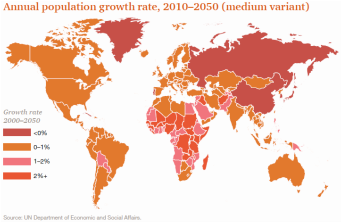
Explosive population growth in some areas against declines in others contributes to everything from shifts in economic power to resource scarcity to the changes in societal norms.
Countries have very different demographic trajectories. Some societies are aging rapidly and their workforces will be constrained as a share of the total population - e.g., Japan and Germany.
Other societies are young and growing, which will create ever larger labor forces and consumer markets - e.g., India and Philippines.
Youthful, growing populations must be fed, housed, educated, and employed for productive potential to be realized.
Smarter homes will be one way to help elderly. With the number of Americans over the age of 65 expected to nearly double to 72.1 million by 2030, many companies, universities, and research facilities are looking to robots to help with their care. Georgia Institute of Technology researchers developed Cody, a robotic nurse that can help with bathing, and GeckoSystems’ SafePath™ robotically assisted wheelchair uses navigation technology for situationally-aware, real-time obstacle avoidance. Companies in Japan, France, and other countries are also developing caretaker robots.
Countries have very different demographic trajectories. Some societies are aging rapidly and their workforces will be constrained as a share of the total population - e.g., Japan and Germany.
Other societies are young and growing, which will create ever larger labor forces and consumer markets - e.g., India and Philippines.
Youthful, growing populations must be fed, housed, educated, and employed for productive potential to be realized.
Smarter homes will be one way to help elderly. With the number of Americans over the age of 65 expected to nearly double to 72.1 million by 2030, many companies, universities, and research facilities are looking to robots to help with their care. Georgia Institute of Technology researchers developed Cody, a robotic nurse that can help with bathing, and GeckoSystems’ SafePath™ robotically assisted wheelchair uses navigation technology for situationally-aware, real-time obstacle avoidance. Companies in Japan, France, and other countries are also developing caretaker robots.

But the elderly is not the only issue. Over 50% CEOs are planning to increase headcount in the coming year, according to PwC’s 17th Annual Global CEO Survey, and 93% recognize the need to change or are changing their strategies for attracting and retaining talent. Sixty-three percent are concerned that the lack of key skills could threaten growth prospects.
The implications of these demographics range tremendously.
The implications of these demographics range tremendously.
- Governments will have to replace a loss of revenue from retirees to fund an increasing burden of healthcare and retirement costs for the elderly.
- Work will need to redesigned to accommodate not just remote working but timezones and cultures.
- More advanced technology solutions to address quality of life, ability to stay connected, accelerating the human interface with emerging technologies like virtual reality.
PIVOTING OF GLOBAL ECONOMIC POWER
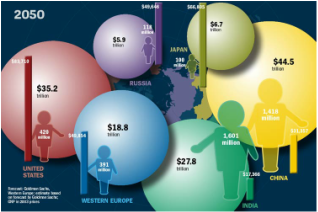
The focus of global growth has shifted. Western economic dominance is a relatively recent phenomenon, and the developments we see are essentially a rebalancing of the global economies.
A realignment of global economic and business activity is transitioning BRIC and other growth countries from centers of labor and production to consumption-oriented economies. As they become exporters of capital, talent, and innovation, the direction of capital flows is being adjusted.
Along with the growth and size of the emerging markets (many are no longer "emerging" but a dominant force in their own way), it’s important to appreciate the interconnectivity of the trade and investment flows between them, which are growing much faster than the traditional routes from developed-to-emerging and developed-to-developed countries.
There is already movement in Asia-Pacific and Latin America to decouple their export-led economies to one similar to Europe and North. The economies of China, Malaysia, the Philippines, Peru, and Chile grew more than 5% in 2012, while also experiencing steep declines in exports relative to their GDPs, according to The World Bank. Growth in the Asia-Pacific Economic Cooperation (APEC) region had largely been defined by exports over the last decade.
A realignment of global economic and business activity is transitioning BRIC and other growth countries from centers of labor and production to consumption-oriented economies. As they become exporters of capital, talent, and innovation, the direction of capital flows is being adjusted.
Along with the growth and size of the emerging markets (many are no longer "emerging" but a dominant force in their own way), it’s important to appreciate the interconnectivity of the trade and investment flows between them, which are growing much faster than the traditional routes from developed-to-emerging and developed-to-developed countries.
There is already movement in Asia-Pacific and Latin America to decouple their export-led economies to one similar to Europe and North. The economies of China, Malaysia, the Philippines, Peru, and Chile grew more than 5% in 2012, while also experiencing steep declines in exports relative to their GDPs, according to The World Bank. Growth in the Asia-Pacific Economic Cooperation (APEC) region had largely been defined by exports over the last decade.
TECHNOLOGY INNOVATION
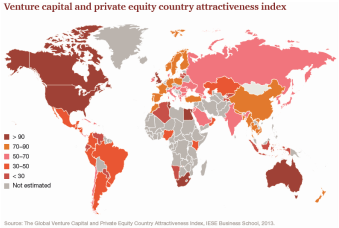
Breakthroughs in nanotechnology and other frontiers of research and development are increasing productive potential and opening up new investment opportunities.
Entire new industries are being created, which is already having a significant impact on the size and shape of the world’s manufacturing and high-tech sectors and the companies that operate within them.
The combination of the internet, mobile devices, data analytics, and cloud computing will continue to transform our world. Many companies across all sectors are grappling with how these developments will affect consumer expectations, the way they interact with their customers, and the underlying business models that support this.
The intersection of data analytics, smart devices, telecommunications, and other advances are still not understood to a sufficient depth to make them orders of magnitude more productive.
Goods to the home is changing as drones emerge, analytics will drive insights into smaller and smaller segments, and we will become our own best physician as today's wearables become more adept at recommending therapeutics and not just making basic measurements.
Entire new industries are being created, which is already having a significant impact on the size and shape of the world’s manufacturing and high-tech sectors and the companies that operate within them.
The combination of the internet, mobile devices, data analytics, and cloud computing will continue to transform our world. Many companies across all sectors are grappling with how these developments will affect consumer expectations, the way they interact with their customers, and the underlying business models that support this.
The intersection of data analytics, smart devices, telecommunications, and other advances are still not understood to a sufficient depth to make them orders of magnitude more productive.
Goods to the home is changing as drones emerge, analytics will drive insights into smaller and smaller segments, and we will become our own best physician as today's wearables become more adept at recommending therapeutics and not just making basic measurements.
WE SHOULD TALK
Let's discuss how we can help you fold MegaTRENDS into your strategy.
Please contact us.
Let's discuss how we can help you fold MegaTRENDS into your strategy.
Please contact us.
Related Consulting Services
Proudly powered by Weebly
|
Vaxa Inc. © 1998-2020 All Rights Reserved
|
CONNECT WITH US
|

